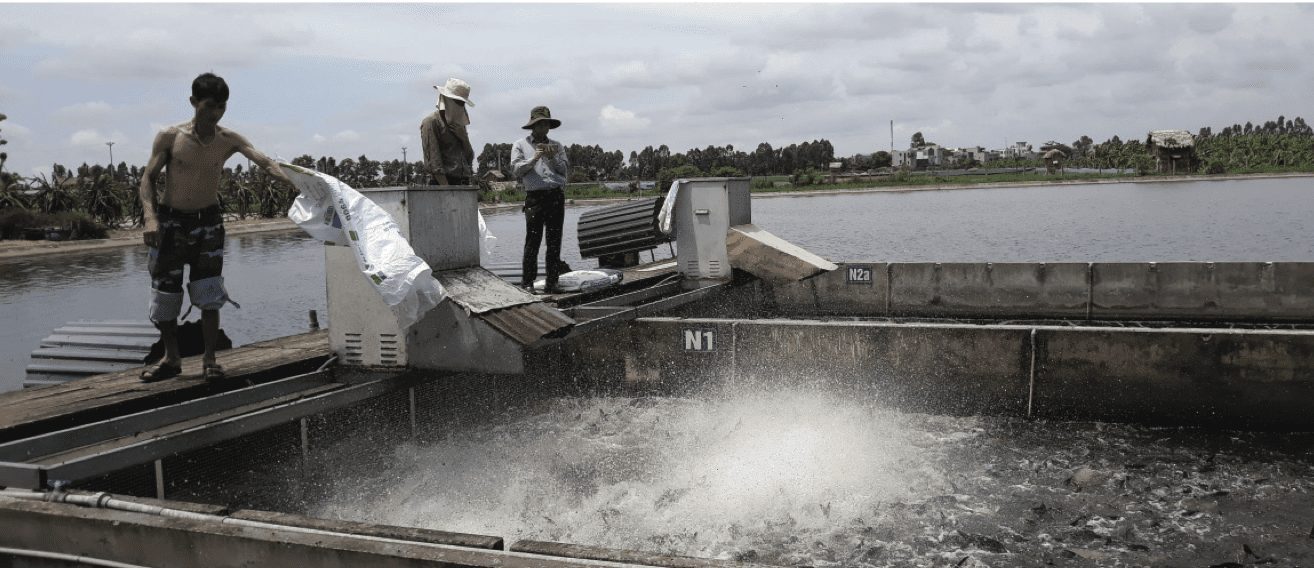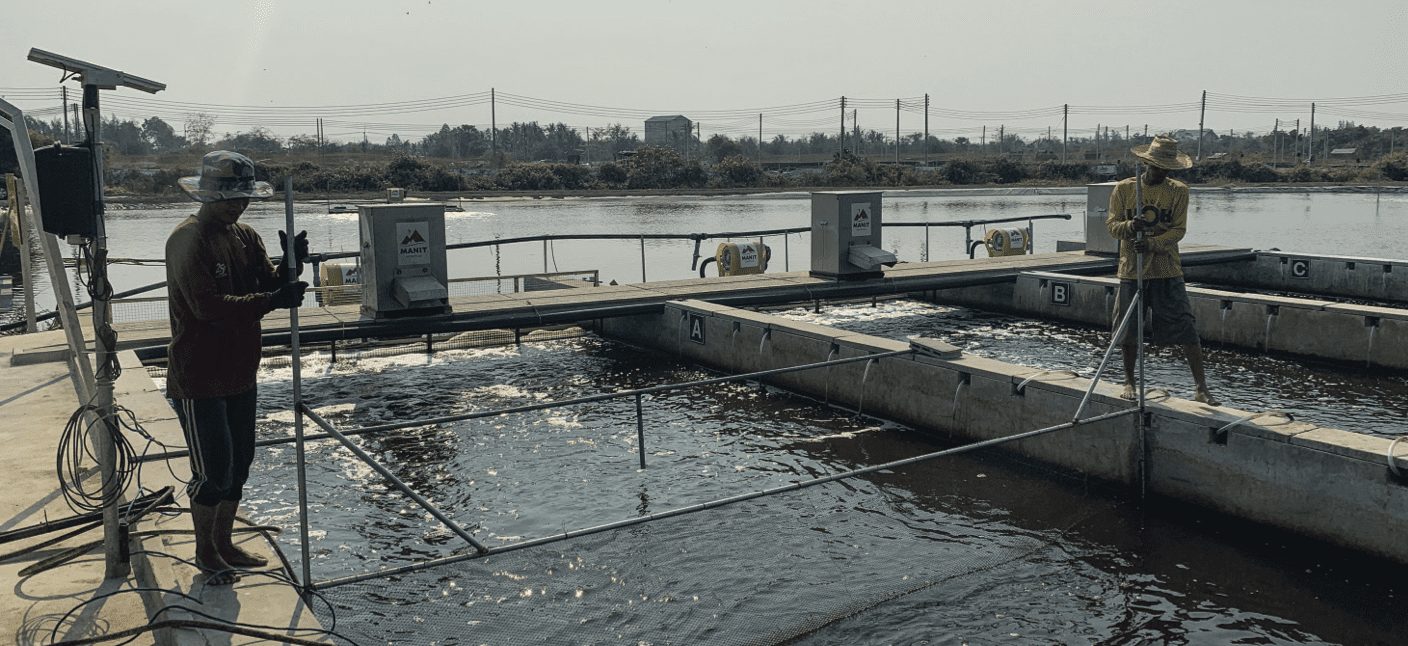 The U.S. Soybean Export Council invests in innovative tools enabling customers to make research-based data-driven decisions in their choices of soybeans and soybean products. This is the fourth story in a four-part series on the soy-specific tools and technologies for international customers of U.S. Soy.
The U.S. Soybean Export Council invests in innovative tools enabling customers to make research-based data-driven decisions in their choices of soybeans and soybean products. This is the fourth story in a four-part series on the soy-specific tools and technologies for international customers of U.S. Soy.
Historically, traditional pond aquaculture systems face natural resource constraints, such as water and energy, as well as environmental issues. These limitations can hold back a country’s aquaculture industry development, impacting local nutrition security, as well as an aquaculture producer’s efficiency. Fish convert soybean meal into muscle protein more efficiently than other animals, increasing the importance of economically viable aquaculture production. The U.S. Soybean Export Council (USSEC) prioritizes In-Pond Raceway System (IPRS) technology to enable effective, efficient and sustainable aquaculture production.
 The IPRS allows aquaculture producers to increase fish production while significantly reducing environmental impact and optimizing operating cost. The IPRS concept is to concentrate fish in “raceways” within a pond and provide them with constant water circulation. The IPRS is an innovative combination of existing tools and aquaculture principles for more efficient and sustainable fish production.
The IPRS allows aquaculture producers to increase fish production while significantly reducing environmental impact and optimizing operating cost. The IPRS concept is to concentrate fish in “raceways” within a pond and provide them with constant water circulation. The IPRS is an innovative combination of existing tools and aquaculture principles for more efficient and sustainable fish production.
As adoption spreads around the world, there are many pieces to the puzzle. USSEC’s recently released IPRS Manual enables seafood and aquaculture companies to access the latest best-in-class approach and lowers the barrier of entry to this cutting-edge approach to aquaculture production.
“IPRS is three times more productive than a pond of the same size without IPRS,” said Charles Hall, USSEC Director of animal and aquaculture nutrition meal. “USSEC’s technical specifications are the gold standard for producers who intend to incorporate IPRS on their farms. Our international aquaculture technical experts also collaborate and serve customers who choose this technology. This new IPRS guide serves as a great tool to determine if the IPRS is right for your business.”
Throughout the manual, producers explore the IPRS as it combines the management benefits of confining fish in a small portion of the pond with the production capacity of a flowing water system. This technology combats traditional natural resource barriers by creating a flowing “river in the pond” and allowing the water to mix and move as it would in a riverine system. This flowing water significantly increases the pond’s production potential while lowering per unit production costs, reducing risk, and improving yields.
Colombian producers, for example, have seen three times higher production with the IPRS i.e. 76 ton/hectare/year, compared to the traditional system of pond production, 25 ton/hectare/year. They’ve also experienced a significant reduction in the energy cost per unit, or kg, of fish produced.
Systems in Mexico have garnered similar results. TuPez, one of Mexico’s largest tilapia operations, showed 60% higher production, 140 tons/ha/year, compared to 87.5 tons/ha/year.
IPRS practices enable farmers to use the same volume of water to produce more fish, supporting food and nutrition security, enhancing local livelihoods, while utilizing sustainable practices, and generating economic growth.
USSEC’s new IPRS manual is complete with deep background, information on the design and construction of the systems, installation, management practices, maintenance and more.
For more information on how USSEC can serve your aquaculture business and the IPRS technology, please contact Hall at chall@ussec.org.
- Partially funded by U.S. soybean farmers, their checkoff and the soy value chain
